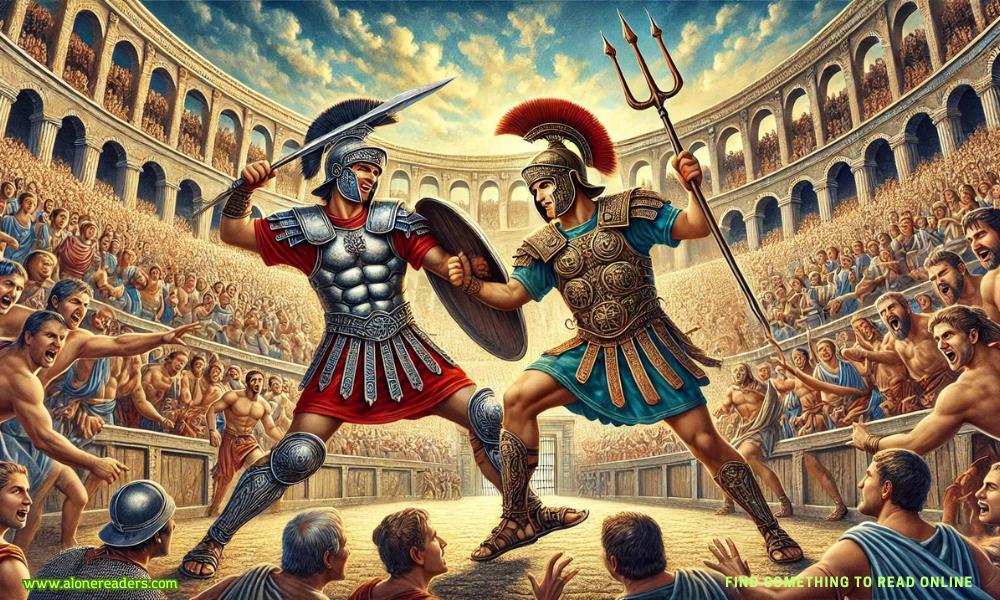
The image of the gladiator is one of the most enduring symbols of Ancient Rome. From Hollywood blockbusters to popular literature, gladiators are often depicted as fearless warriors who fought to the death in grand arenas, entertaining bloodthirsty crowds with their prowess and bravery. However, the reality of gladiatorial combat and the lives of these ancient fighters is far more complex and nuanced than the dramatic portrayals suggest. By examining historical evidence, we can separate fact from fiction and gain a more accurate understanding of who these gladiators were and what their lives were truly like.
Gladiators were not always the slaves and criminals often depicted in movies. While many gladiators were indeed slaves, forced into the brutal life of combat, there were also free men who volunteered for the profession. These volunteers, known as auctorati, were typically motivated by the promise of fame, fortune, and the opportunity to escape poverty. Gladiatorial schools, or ludus, provided rigorous training and a chance for these men to achieve a status that was otherwise unattainable in Roman society.
The fights themselves were not always to the death. Contrary to popular belief, gladiatorial combat was a highly regulated and structured event. The goal was not necessarily to kill the opponent but to demonstrate skill, bravery, and adherence to the rules of combat. Gladiators were valuable investments for their owners, and their deaths were not taken lightly. Referees, or summa rudis, were present in the arena to enforce the rules and could stop the fight if it became too dangerous. The fate of a defeated gladiator often lay in the hands of the audience and the sponsor of the games, who could grant mercy or signal for death.
The iconic "thumbs up" or "thumbs down" gesture to decide the fate of a gladiator is another misconception. Historical evidence suggests that the gestures used by the Romans were more nuanced and less clear-cut than popular culture would have us believe. The decision to spare or kill a defeated gladiator involved various hand signals and verbal cues that are not fully understood today.
The life of a gladiator, while harsh, was not without its rewards. Successful gladiators could achieve celebrity status, earning the adoration of the public and substantial monetary rewards. They were often given gifts of money, property, and even freedom. A gladiator who had gained significant popularity could become a lanista, a trainer of new gladiators, after retirement. This path offered a way out of the arena and into a respectable, albeit still dangerous, profession.
The depiction of gladiatorial games as simple, mindless bloodsport also fails to capture the cultural and political significance of these events. Gladiatorial games were an important aspect of Roman society, serving both as a tool for political propaganda and a means of social control. Emperors and politicians used the games to gain favor with the populace, distract from political issues, and demonstrate their power and generosity. The games were a complex spectacle, involving not just gladiatorial combat but also animal hunts, executions, and theatrical reenactments of famous battles.
Moreover, the training and preparation of gladiators were highly sophisticated. Gladiatorial schools employed specialized trainers, doctors, and dietitians to ensure the gladiators were in peak physical condition. The training regimes were grueling, designed to build endurance, strength, and combat skills. Gladiators followed strict diets to maintain their physique and stamina, consuming a diet rich in carbohydrates and protein, supplemented with a special ash drink believed to strengthen the body.
Despite the hardships and dangers, the life of a gladiator offered a rare opportunity for social mobility in a rigidly hierarchical society. Some gladiators, through their skill and luck, were able to transcend their status as slaves or low-born individuals, gaining wealth, freedom, and even political influence.
In conclusion, the world of Ancient Roman gladiators is a fascinating blend of fact and fiction. While the popular image of the gladiator as a doomed slave fighting to the death for the entertainment of a bloodthirsty crowd contains elements of truth, it is far from the whole story. Gladiators were complex figures who occupied a unique and often contradictory position in Roman society. They were both despised and revered, symbols of both barbarity and heroism. By peeling back the layers of myth and legend, we can gain a deeper appreciation for the real lives of these ancient warriors and the society that both celebrated and exploited them.